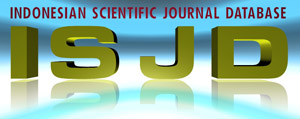FONOLOGI BAHASA BALI DIALEK JEMBRANA
DOI:
https://doi.org/10.23887/jish-undiksha.v7i1.13670Abstract
Penelitian ini berjudul Fonologi Bahasa Bali Dialek Jembrana. Secara khusus penelitian ini bertujuan untuk mendeskripsikan proses fonologis dan lingkungan fonologis Bahasa Bali Dialek Jembrana. Penelitian ini adalah penelitian kualitatif. Objek penelitian dalam penelitian ini adalah data verbal yang berupa kata-kata yang diucapkan oleh penutur asli Bahasa Bali Dialek Jembrana. Metode pengumpulan data yang dipilih adalah metode simak dengan teknik sadap dan dilanjutkan dengan teknik rekam. Metode analisis data yang dipilih adalah metode padan intralingual. Hasil penelitian menunjukkan bahwa ditemukan 16 proses fonologis Bahasa Bali Dialek Jembrana yakni asimilasi nasal /ŋ/, pelesapan obstruen /p, b, t, d, c, ɟ, k, g, s/, pelesapan /s/, pelesapan /ŋ/, pelesapan /n/, pelesapan /k/, pelesapan /ə/, penyisipan /n/, penyisipan/ŋ/, penyisipan semivokal /y/, penyisipan semivokal /w/, penyisipan /ə/, desimilasi vokal, pengenduran vokal, peninggian vokal /a/, dan penurunan vokal /i/.
Kata Kunci: Fonologi, proses fonologis, lingkungan proses fonologis, Dialek Jembrana, Bahasa Bali
Downloads
Published
Issue
Section
License
Authors who publish with the Jurnal Ilmu Sosial dan Humaniora agree to the following terms:
- Authors retain copyright and grant the journal the right of first publication with the work simultaneously licensed under a Creative Commons Attribution License (CC BY-SA 4.0) that allows others to share the work with an acknowledgment of the work's authorship and initial publication in this journal.
- Authors are able to enter into separate, additional contractual arrangements for the non-exclusive distribution of the journal's published version of the work (e.g., post it to an institutional repository or publish it in a book), with an acknowledgment of its initial publication in this journal.
- Authors are permitted and encouraged to post their work online (e.g., in institutional repositories or on their website) prior to and during the submission process, as it can lead to productive exchanges, as well as earlier and greater citation of published work. (See The Effect of Open Access)


.png)
.png)













